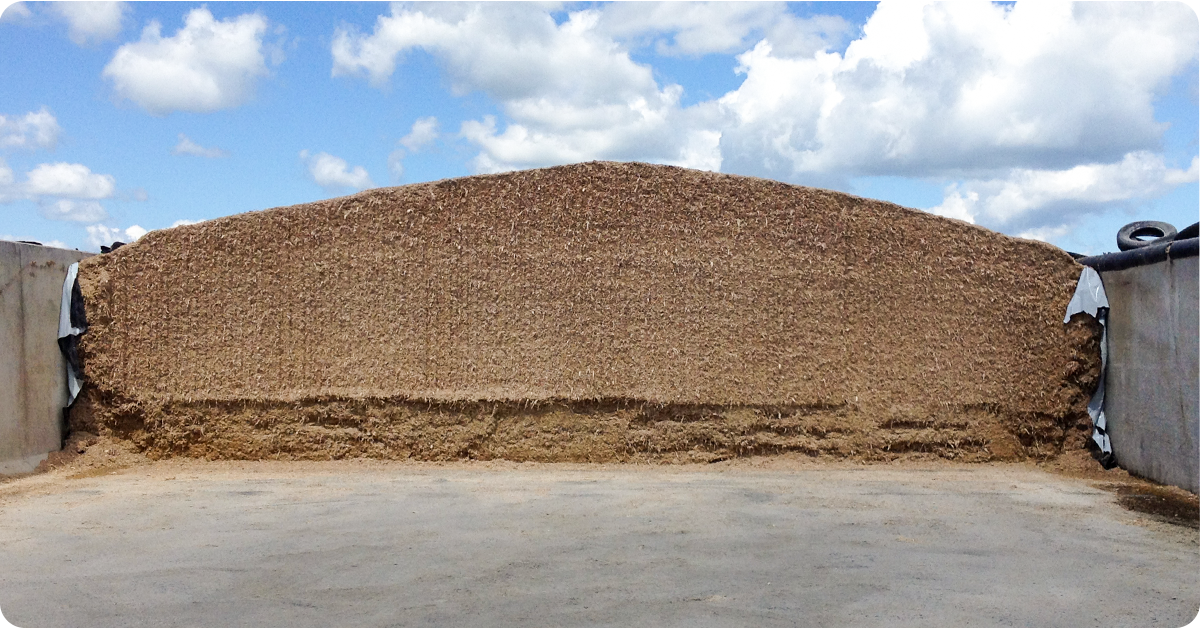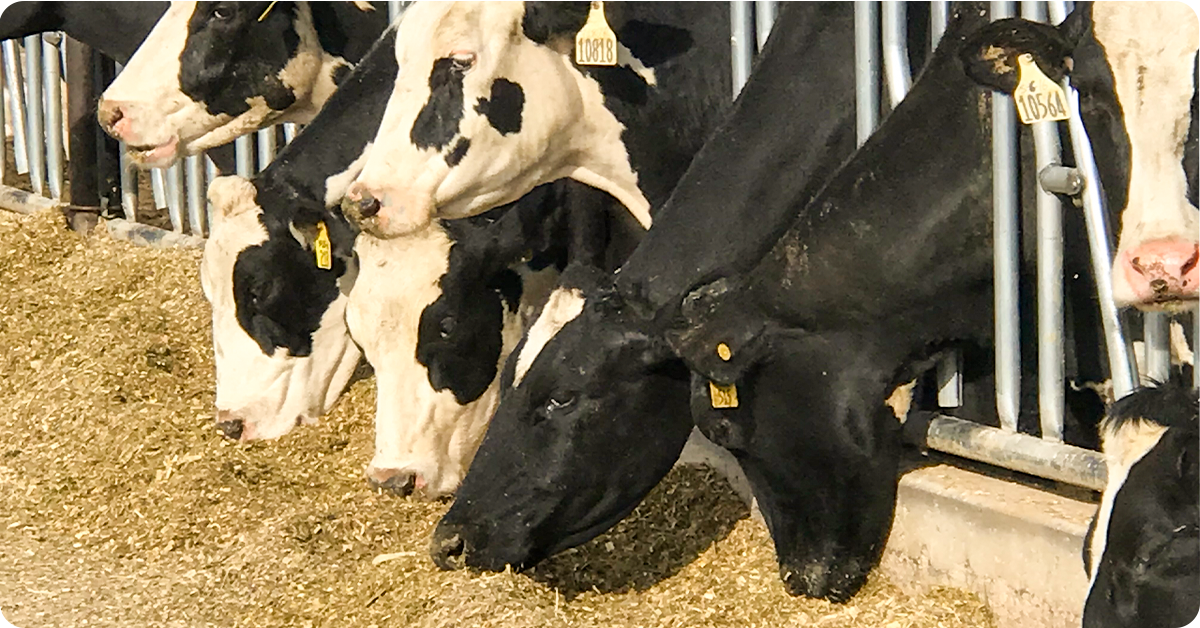
As fall winds down and winter begins, farmers across the Intermountain West will begin opening their silage pits and piles. For many operations, silage is a main feed ingredient in their rations and high quality silage is important to the health of their animals and in turn their success. Many decisions contribute to high quality silage; including plant variety, harvest timing, chop size, pack density, and multiple others.
At this point, any previous mistakes can’t be corrected, but a good pile can be ruined if the open-ing and feed-out aren’t managed correctly. Oxygen is the enemy of good silage, so it is important to take all measures possible to prevent air from getting into the pile during the rest of the process. Oxygen will jump start microbial and fungal growth within the pile, both of which are undesirable.
There are a few principles to follow when feeding out the pile:
Uncover no More of the Pile Than Will be Fed in 3 Days
This will ensure that excess silage isn't exposed to the air sooner than it needs to be. Even in the best packed piles, oxygen can travel up to 3 feet into the silage.

Don't Remove Silage From the Pile by Digging and Lifting From the Bottom
This can cause cracks that allow air deep into the silage. Sometimes These cracks can stretch for feet into the pile. If you notice veins of mold growth into the pile as you are feeding, this is probably what happened. The best practice is to use a silage shaver to take a few inches at a time from the top of the pile to the bottom. However, if this isn't feasible for your operation, there are a few different tactics that are used to keep the integrity of the pile intact:
- Scrape the pile from the side. This allows the operator to work from the top down and refrain from lifting up sections of the pile.
- Use a silage rake. This performs similarly to a shaver by removing a few inches at a time from the top down. There are commercial rates available or if someone is handy with a welder they can be homemade as well. Obviously, imagination is the only limit in this situation as long as it helps remove silage from the top down and keep the pile intact.
- If your only option is to use your loader bucket and the pile orientation doesn’t allow for access from the side, then the key is to remove silage from the top to the bottom. Try to only remove a few inches at a time and don’t make large gouges in the face.
Remove 6–12 Inches of Silage Each Day
Taking this amount will ensure that the exposed face remains fresh and is fed before the quality can decrease too much. If it isn't possible to feed that much silage daily, then it might be feasible to only uncover and feed from one side of the face to prevent quality and dry matter loss.
Avoid Leaving Loose Silage at the Base of the Pile
This can catch rain/snow or can even heat and undergo what is called secondary fermentation. Try To only knock down what is needed for each feeding and clean up the base of the pile each time.
Monitor the Dry Matter of the Silage Being Fed to Your Cattle
A change in dry matter can substantially change the nutrients delivered at the feed bunk.
Keeping Silage Nutritious and Edible
Although some of these principles can be hard to accomplish, doing them all can help ensure that nearly 100% of your silage is edible and nutritious once it makes it to the feed bunk. If your operation cannot accomplish all of them, then at least work on those you can and watch for the improvements that will happen.
Let an IFA Nutritionist Help You
If you need help determining your silage usage for the year, monitoring dry matter, or calculating feed rates, don’t hesitate to reach out to a member of IFA’s feed sales and technical services team for assistance.
Discover IFA Feed & Nutrition Services
Written by Jeffrey Briscoe, IFA Feed Technical Services/Formulation, and originally published in the IFA Cooperator magazine (vol. 86, no. 4) Winter 2020.


